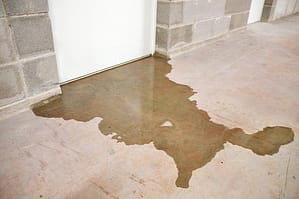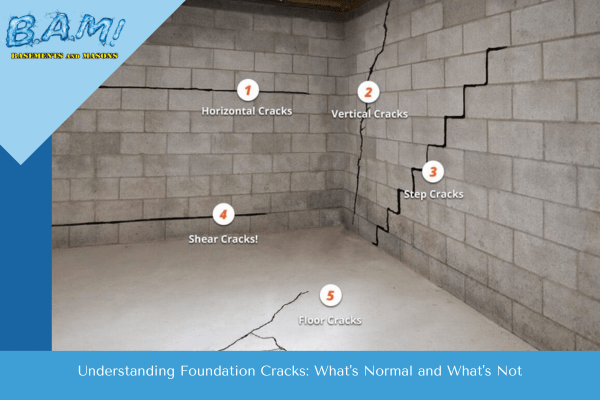How Best Basement Waterproofing can Save You Time, Stress, and Money.
The smart Trick of Best Basement Waterproofing That Nobody is Talking About
Table of ContentsIndicators on Best Basement Waterproofing You Need To KnowUnknown Facts About Best Basement WaterproofingFacts About Best Basement Waterproofing UncoveredSome Ideas on Best Basement Waterproofing You Need To KnowGetting The Best Basement Waterproofing To Work
What triggers water damages problems in your cellar? Below are a couple of things to search for: when the foundation of your home is compromised, water is great at sneaking in between tiny splits and holes and triggering damages. Pipelines that line the inside of your walls are simply one example of where water damages can occur.The soil and ground of your home is really important. If there is excessive water bordering your home, nonetheless, it can press the soil right into your home and trigger the seals of your cellar to come to be compromised. Best Basement Waterproofing. when you see excess water in position where it must not be, that is a great indicator that you have an issue
Concrete waterproofing finishings are cement-like; once dry, they adhere permanently to concrete and stonework wall surfaces. You use the coating with a hefty brush made with bristles swirled throughout application for an attractive, ended up look. Concrete water resistant layers can not be used to previously repainted surface areas Silicate-based concrete sealants, additionally understood as densifiers, are also appropriate just for walls that have not been repainted or secured.
Plastic sheets and panels might be combined with interior cellar drain systems. They don't quit water from getting via the wall, but they do quit it from ruining things in the basement.
The 10-Minute Rule for Best Basement Waterproofing
A sump pump is needed to move water out of your basement. In order to properly suggest a remedy for your wet cellar, call American Eagle for a no-obligation go to. Our service technicians will have the ability to clarify which services are choices for your home. Why should you waterproof your basement? Here are a couple of points the specialists can mount to assist the waterproofing procedure: this is made for the walls of your cellar (Best Basement Waterproofing).

Basement waterproofing is a terrific means to obtain ahead of possible water damage that might come your way.
9 Simple Techniques For Best Basement Waterproofing
When it comes to safeguarding your home, one of the most vital actions you can take is basement waterproofing. A dry cellar not only makes sure a secure and healthy environment for you and your family, yet it likewise aids to stop costly water damage and mold and mildew development. In this article, we will certainly review the significance of cellar waterproofing, the benefits it provides, and just how you can set about protecting your space.
By purchasing basement waterproofing now, you can aid to guarantee that your home maintains its worth and appearance in time. Another benefit of cellar waterproofing is that it can assist to lower your power bills. A moist cellar can add to higher degrees of humidity in your house, which can make your cooling and heating system work harder to preserve a comfortable temperature level.
When it concerns cellar waterproofing, there are several approaches that can be utilized to maintain water out of your area. These consist of interior sealants, outside waterproofing membranes, and water drainage systems. The very best approach for your cellar will rely on factors such as the degree of water intrusion, the problem of your structure, and your budget plan.
Finally, basement waterproofing is an important action in securing your home from water damages, mold growth, and various other issues. By purchasing cellar waterproofing, you can ensure that your area remains completely dry, safe, and healthy for you and your household. Not only does basement waterproofing give assurance and defense for your home, but it can likewise raise its worth and save you cash on energy prices in the lengthy run.
3 Simple Techniques For Best Basement Waterproofing
Inside sealants are a type of cellar waterproofing method that includes using a sealer to the within of the cellar walls and floors. Water can leak right into a cellar via cracks, voids, or permeable concrete, especially in locations where there is high groundwater or inadequate drainage. This can cause water damage and mold browse around here growth, along with damages to the structure and structural integrity of the building.
The sealant produces a barrier that stops water from permeating via the concrete. However, this method is only reliable for minor water damage and does not address the underlying causes of the wetness. The primary source of the need for outside basement waterproofing is water infiltration from the beyond the foundation wall surfaces.
It is an effective solution for avoiding water damage and preserving the structural integrity of the building. However, it can be expensive and turbulent to install, as it calls for excavation around the structure and might include index landscape design and various other fixings once the waterproofing is full. This technique is the browse around here most reputable and long-lasting remedy for stopping water seepage in the cellar.
The 9-Second Trick For Best Basement Waterproofing
